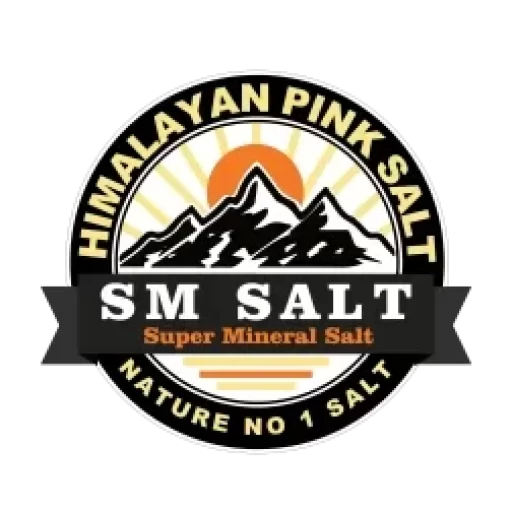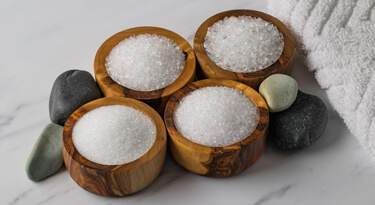84 Minerals In Himalayan salt
Himalayan Pink Salt has gained popularity in recent years for its unique flavor and beautiful pink shade. But did you know that this natural salt as well boasts an impressive mineral profile? With 84 minerals in Himalayan salt and trace elements, Himalayan Pink Salt provides more than just a savory seasoning. view our product
Best 84 Minerals In Himalayan Salt:
Magnesium: Himalayan Pink Salt is rich in magnesium, a significant mineral that plays a crucial role in numerous bodily functions. Magnesium is important for energy production, muscle and nerve function, and maintaining healthy bones and teeth. Incorporating Himalayan Pink Salt into your diet can contribute to meeting your daily magnesium needs.
Sodium: While sodium is often associated with health concerns when consumed in excess, it is an important mineral that our bodies need in moderation. Himalayan Pink Salt contains sodium, which helps maintain proper fluid balance, nerve function, and muscle contraction. However, it’s important to consume salt in moderation and within the recommended daily limits.
Potassium: Potassium is an important mineral that supports heart health, muscle function, and electrolyte balance. Himalayan Pink Salt contains potassium, which helps regulate blood pressure, supports proper hydration, and assists in the transmission of nerve impulses.
Calcium: Calcium is well-known for its role in promoting strong bones and teeth. Himalayan Pink Salt contains calcium, which contributes to maintaining healthy bone density and helping in muscle function. While calcium is more abundant in dairy products, every bit counts when it comes to meeting your daily requirements.
Iron: Iron is an essential mineral that plays a crucial role in carrying oxygen throughout the body and supporting overall energy levels. Himalayan Pink Salt contains traces of iron, which can contribute to meeting your daily iron needs. However, it’s significant to note that the iron content in Himalayan Pink Salt is relatively low compared to other dietary sources.
Zinc: Zinc is an essential mineral that supports a healthy immune system, aids in wound healing, and contributes to normal growth and development. Himalayan Pink Salt contains traces of zinc, adding to your overall zinc intake when consumed as part of a balanced diet.
Copper: Copper is a trace mineral that plays a role in various physiological processes, including the production of red blood cells, collagen formation, and supporting a healthy immune system. Himalayan Pink Salt contains traces of copper, which contributes to your overall copper intake.
Iodine: Iodine is a crucial mineral for thyroid function and the production of thyroid hormones. While Himalayan Pink Salt naturally contains iodine, the levels may vary, and it may not be a sufficient source to meet your daily iodine requirements. It’s important to ensure adequate iodine intake through other dietary sources or iodized salt.
Manganese: Manganese is a trace mineral that acts as an antioxidant and is involved in various enzymatic reactions in the body. It supports bone health, metabolism, and the production of collagen. Himalayan Pink Salt contains traces of manganese, contributing to your overall manganese intake.
Selenium: Selenium is an essential mineral that plays a vital role in antioxidant defense, thyroid function, and immune system support. Himalayan Pink Salt contains traces of selenium, adding to your overall selenium intake when incorporated into your diet.
Chromium: Chromium is a trace mineral that assists in regulating blood sugar levels and enhancing insulin sensitivity. While Himalayan Pink Salt contains small amounts of chromium, it can contribute to your overall intake of this important mineral.
Nickel: Nickel is a trace mineral that is required in very small quantities by the body. It is involved in various enzymatic processes and plays a role in the metabolism of certain nutrients. Himalayan Pink Salt contains traces of nickel, adding to your overall dietary intake of this mineral.
Cobalt: Cobalt is a trace mineral that is essential for the production of vitamin B12. It plays a crucial role in red blood cell formation and neurological function. Himalayan Pink Salt contains traces of cobalt, contributing to your overall cobalt intake.
Silica: Silica, also known as silicon dioxide, is a mineral that supports the health of connective tissues, such as skin, hair, and nails. It also plays a role in bone health and the formation of collagen. Himalayan Pink Salt contains traces of silica, adding to your overall silica intake.
Vanadium: Vanadium is a trace mineral that is involved in various physiological processes, including carbohydrate metabolism and bone health. It may also have potential insulin-mimetic effects. While Himalayan Pink Salt contains small amounts of vanadium, it contributes to your overall vanadium intake.
Phosphorus: Phosphorus is a vital mineral that plays a key role in bone and teeth health, energy metabolism, and cell function. It is essential for the proper functioning of various enzymes and hormones in the body. Himalayan Pink Salt contains traces of phosphorus, contributing to your overall phosphorus intake.
Fluoride: Fluoride is a mineral that is important for dental health, as it helps strengthen tooth enamel and prevent tooth decay. While fluoride is commonly associated with dental products like toothpaste and mouthwash, Himalayan Pink Salt may also contain traces of fluoride.
Sulfur: Sulfur is a mineral that is necessary for the synthesis of certain amino acids and proteins in the body. It is involved in various physiological processes, including detoxification and the maintenance of healthy skin, hair, and nails. Himalayan Pink Salt contains traces of sulfur, adding to your overall sulfur intake.
Boron: Boron is a trace mineral that is involved in the metabolism of calcium, magnesium, and phosphorus. It plays a role in maintaining bone health and may also have potential benefits for joint health. Himalayan Pink Salt contains traces of boron, contributing to your overall boron intake.
Gold and Silver (Trace Elements): While not essential minerals for the body, Himalayan Pink Salt may contain trace amounts of gold and silver. These minerals are present in very small quantities and are more of a novelty factor rather than a significant nutritional contribution.
Bismuth: Bismuth is a trace mineral that is known for its soothing and protective properties. It is often used in medicinal applications to alleviate gastrointestinal discomfort. While Himalayan Pink Salt contains small amounts of bismuth, its contribution to overall bismuth intake is minimal.
Rubidium: Rubidium is a trace mineral that has been linked to brain health and cognitive function. It is believed to play a role in neurotransmitter release and may have a positive impact on mood and mental clarity. Himalayan Pink Salt contains traces of rubidium, contributing to your overall rubidium intake.
Lanthanum: Lanthanum is a trace mineral that is primarily known for its industrial applications. It is used in the production of various electronic devices. While Himalayan Pink Salt may contain traces of lanthanum, its presence does not have significant nutritional implications.
Neodymium: Neodymium is a trace mineral that is also primarily used in industrial applications. It is a key component in the production of powerful magnets. While Himalayan Pink Salt may contain traces of neodymium, its presence does not have significant nutritional implications
Other Trace Minerals in Himalaya Pink Salt:
In addition to the minerals mentioned above, Himalayan Pink Salt contains a spectrum of other trace minerals. While these minerals may be present in small quantities, they collectively contribute to the overall nutritional value of Himalayan Pink Salt.
Conclusion:
These were the 84 minerals in Himalayan salt. Himalayan Pink Salt is more than just a visually appealing and flavorful seasoning. It offers a rich array of minerals and trace elements that can contribute to a well-rounded and balanced diet. While Himalayan Pink Salt can be a valuable source of certain minerals, it’s important to remember that it should be consumed in moderation, alongside a diverse range of nutrient-rich foods. Embracing a holistic approach to nutrition ensures that you receive an adequate supply of minerals and other essential nutrients for optimal health and well-being.







Leave a Comment
Your email address will not be published. Required fields are marked *